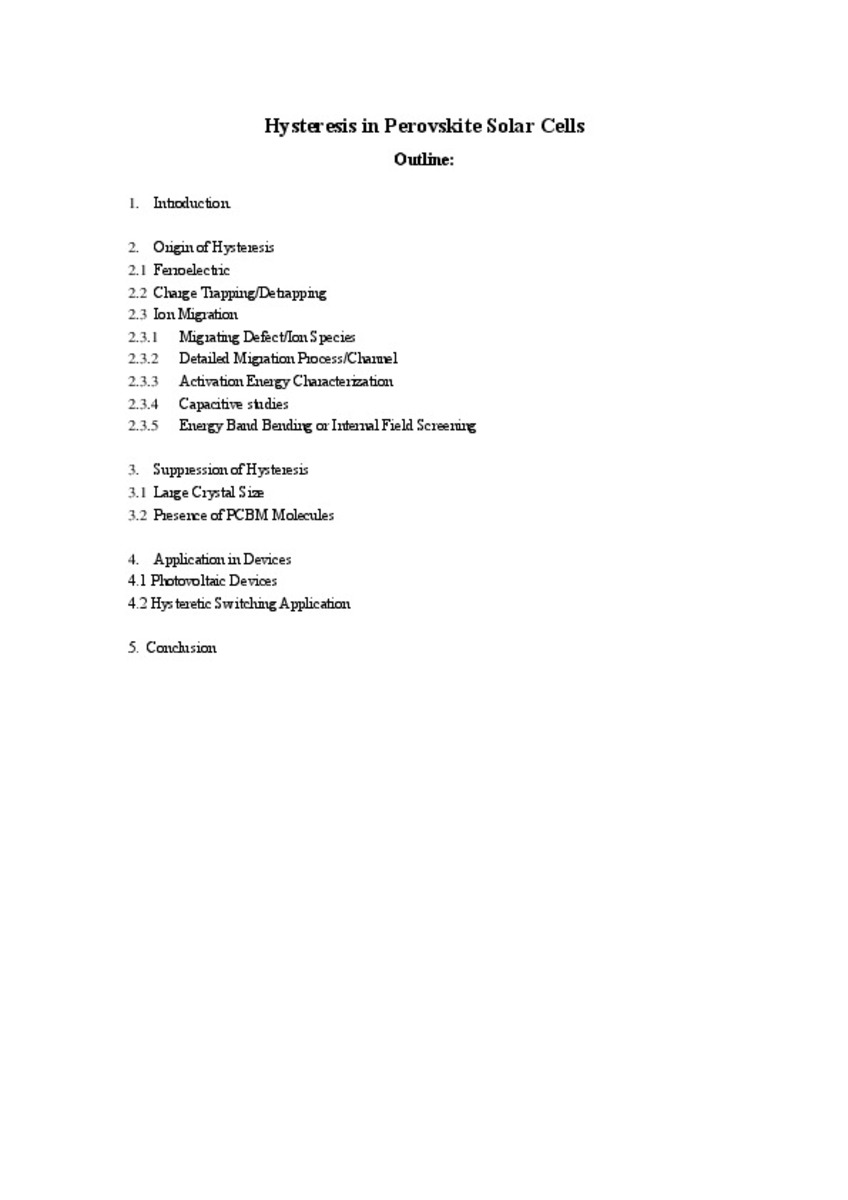Mostrar el registro sencillo del ítem
Origins and mechanisms of hysteresis in organometal halide perovskites
| dc.contributor.author | Li, Cheng | |
| dc.contributor.author | Guerrero, Antonio | |
| dc.contributor.author | Zhong, Yu | |
| dc.contributor.author | Huettner, Sven | |
| dc.date.accessioned | 2017-12-13T11:32:28Z | |
| dc.date.available | 2017-12-13T11:32:28Z | |
| dc.date.issued | 2017-04 | |
| dc.identifier.citation | LI, Cheng, et al. Origins and mechanisms of hysteresis in organometal halide perovskites. Journal of Physics: Condensed Matter, 2017, vol. 29, no 19, p. 193001. | ca_CA |
| dc.identifier.uri | http://hdl.handle.net/10234/170814 | |
| dc.description.abstract | Inorganic–organic halide organometal perovskites, such as CH3NH3PbI3 and CsPbI3, etc, have been an unprecedented rising star in the field of photovoltaics since 2009, owing to their exceptionally high power conversion efficiency and simple fabrication processability. Despite its relatively short history of development, intensive investigations have been concentrating on this material; these have ranged from crystal structure analysis and photophysical characterization to performance optimization and device integration, etc. Yet, when applied in photovoltaic devices, this material suffers from hysteresis, that is, the difference of the current–voltage (I–V) curve during sweeping in two directions (from short-circuit towards open-circuit and vice versa). This behavior may significantly impede its large-scale commercial application. This Review will focus on the recent theoretical and experimental efforts to reveal the origin and mechanism of hysteresis. The proposed origins include (1) ferroelectric polarization, (2) charge trapping/detrapping, and (3) ion migration. Among them, recent evidence consistently supports the idea that ion migration plays a key role for the hysteretic behavior in perovskite solar cells (PSCs). Hence, this Review will summarize the recent results on ion migration such as the migrating ion species, activation energy measurement, capacitive characterization, and internal electrical field modulation, etc. In addition, this Review will also present the devices with alleviation/elimination of hysteresis by incorporating either large-size grains or phenyl-C61-butyric acid methyl ester molecules. In a different application, the hysteretic property has been utilized in photovoltaic and memristive switching devices. In sum, by examining these three possible mechanisms, it is concluded that the origin of hysteresis in PSCs is associated with a combination of effects, but mainly limited by ion/defect migration. This strong interaction between ion motion and free charge carrier transport can be modulated by the prevalent crystalline structure, chemical passivation, and an external photo/electrical field. | ca_CA |
| dc.format.extent | 38 p. | ca_CA |
| dc.format.mimetype | application/pdf | ca_CA |
| dc.language.iso | eng | ca_CA |
| dc.publisher | IOP | ca_CA |
| dc.rights | © 2017 IOP Publishing Ltd | ca_CA |
| dc.rights.uri | http://rightsstatements.org/vocab/InC/1.0/ | * |
| dc.subject | hysteresis | ca_CA |
| dc.subject | ion migration | ca_CA |
| dc.subject | methylammonium lead iodide | ca_CA |
| dc.subject | organo lead halide perovskites | ca_CA |
| dc.subject | perovskite solar cells | ca_CA |
| dc.title | Origins and mechanisms of hysteresis in organometal halide perovskites | ca_CA |
| dc.type | info:eu-repo/semantics/article | ca_CA |
| dc.identifier.doi | https://doi.org/10.1088/1361-648X/aa626d | |
| dc.rights.accessRights | info:eu-repo/semantics/openAccess | ca_CA |
| dc.relation.publisherVersion | http://iopscience.iop.org/article/10.1088/1361-648X/aa626d | ca_CA |
| dc.contributor.funder | MINECO of Spain (MAT2013-47192-C3-1-R) on the DISOLAR2 Project (PROMETEOII/2014/020) ; Generalitad Valenciana and Spanish Ministerio de Economia y Competitividad, Ramon y Cajal Fellowship (RYC-2014-16809). | ca_CA |
| dc.type.version | info:eu-repo/semantics/draft | ca_CA |
Ficheros en el ítem
Este ítem aparece en la(s) siguiente(s) colección(ones)
-
INAM_Articles [511]







